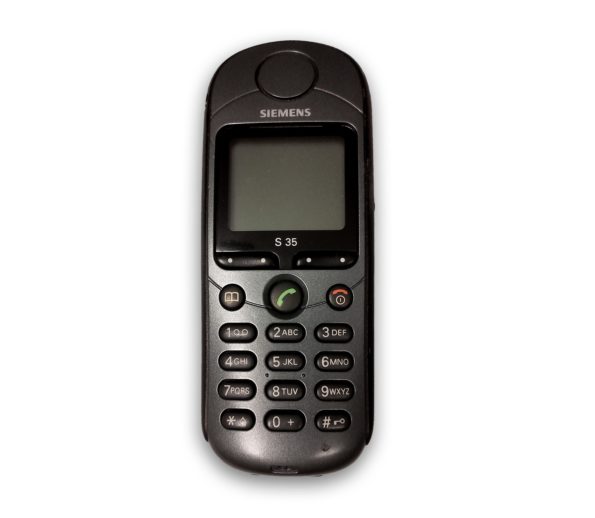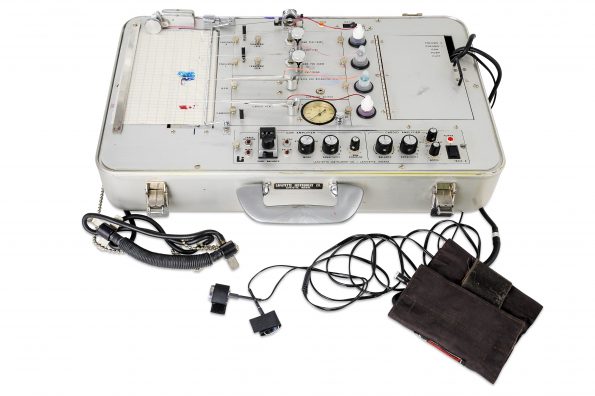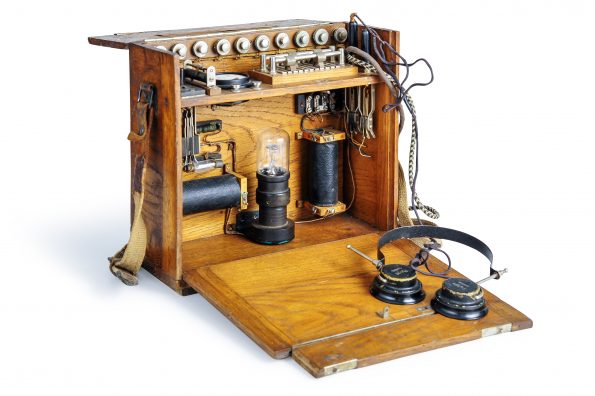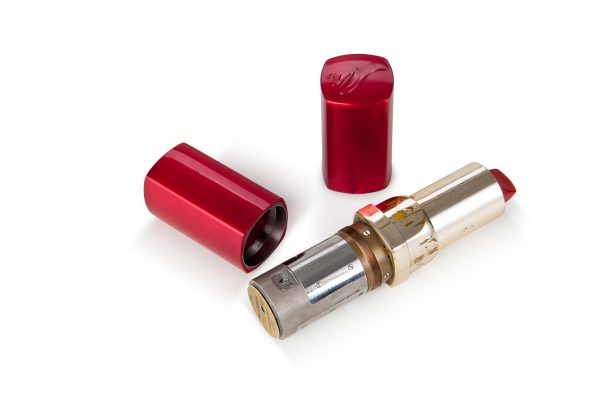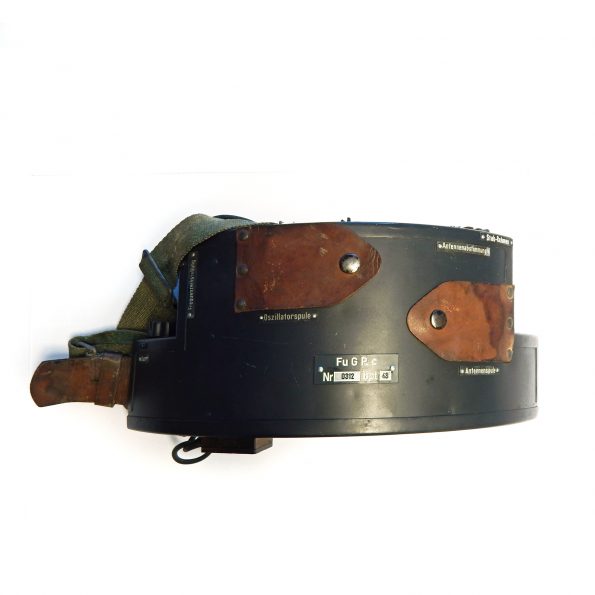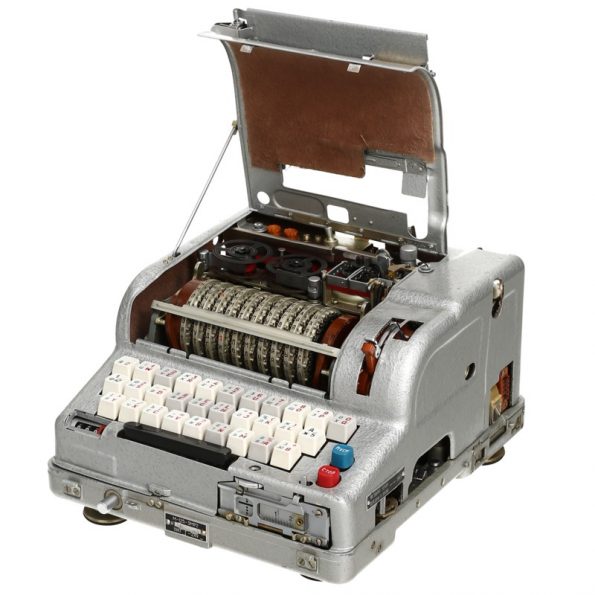The collection of the German Spy Museum Berlin
Collection, conservation, research, exhibiting and communication are the key tasks of every museum. None of this is possible without a collection, which represents the foundation of every such institution. No museum displays all of its collection: the rest is kept under lock and key, accessible only to curators and historians.
The German Spy Museum has accumulated a unique collection of artefacts from the history of espionage. Focusing on the Second World War and the Cold War, we also have a large collection of props from the James Bond films. Here is just a selection of choice objects from our collection:
The TopSec GSM cryptophone used by former German chancellor Gerhard Schröder
The TopSec GSM cryptophone used by Chancellor Schröder and on display in the German Spy Museum was the first ever mass-produced encrypted mobile telephone. It was based on the Siemens S35i mobile telephone developed as a joint venture between Siemens and Rohde & Schwarz.
[...]Lafayette model 76056 polygraph
A number of countries make considerable use of polygraph tests, more commonly known as “lie detectors”. The German Spy Museum has a model of polygraph commonly used by various US intelligence and law enforcement agencies in the 1970s: the Lafayette model 76056 polygraph.
[...]BW Poppr field telephone listening device
One of the first methods of surveillance of mobile field telephones was developed during the First World War. The German Spy Museum Berlin is in possession of one of the last remaining examples of the Abhorchapparat BW Poppr field telephone listening device.
[...]ZVOUK lipstick camera
Intelligence agencies are well-versed in hiding cameras in a range of clandestine locations. Female KGB agents were issued with a camera installed in a regular lipstick. The German Spy Museum has an example from the 1980s, the ZVOUK lipstick camera.
[...]The “Gürtelpeiler”, a wearable radio signal interceptor
Seeking to surprise enemy agents during Wolrd War Two, the German police developed a radio direction finder that was small enough to be worn around a persons’ midriff. After it had proven successful, the Gürtelpeiler was provided to all German intelligence organizations.
[...]Fialka
The M-125-3 Fialka cipher machine – the Russian Enigma As with the famous German Enigma, the name “Fialka” (meaning violet) refers to a number of generations of a similar device. The original model, the M-125, was produced in the USSR from the mid-1950s. This was followed by the M-125-3 series in the late 1960s. Both
[...]